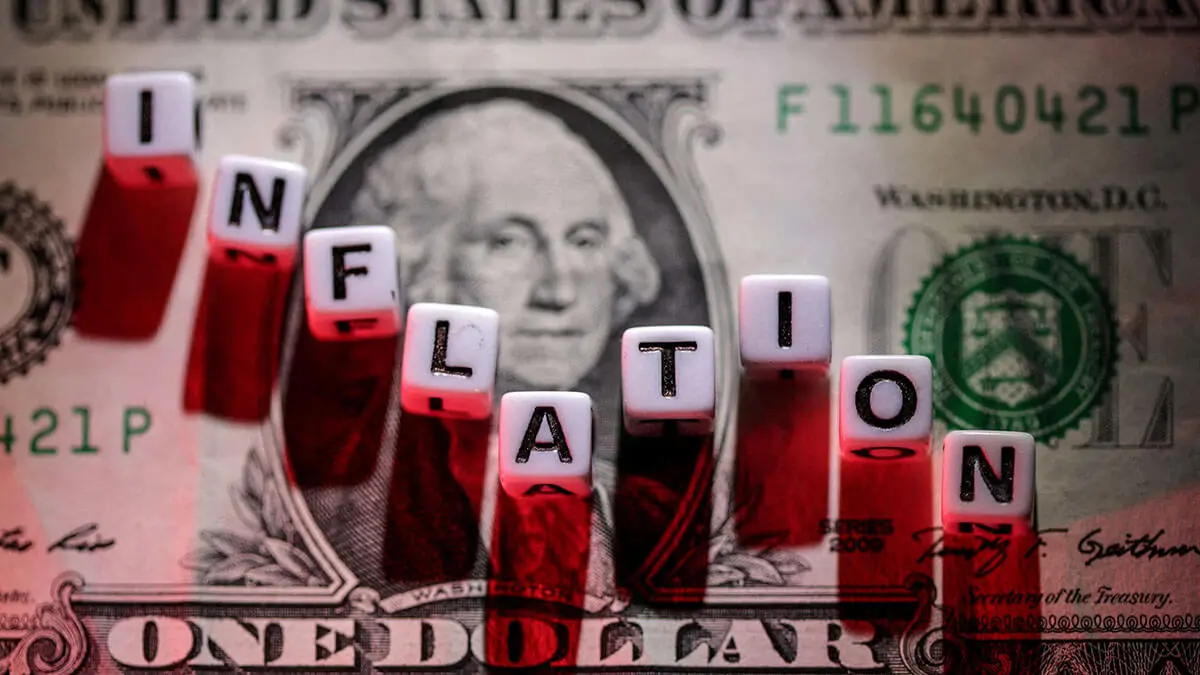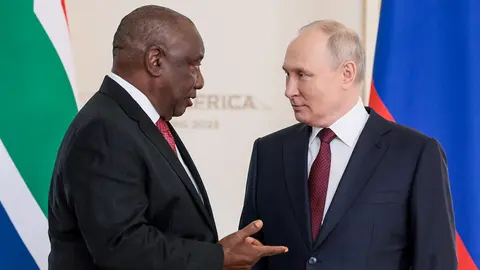The world experiences a better-than-expected first half of the year

The world is coming to the end of the first half of the year with better prospects, partly driven by a growing mass of international tourists; inflation is beginning to fall in several countries thanks to restrictive monetary policy with continuous interest rate hikes, but world trade has still not recovered its pre-pandemic dynamic and remains affected by the war in Ukraine and tariff frictions between China and the United States. The commodity situation is a constant headache.
Even the International Monetary Fund (IMF) expressed some optimism after readjusting its global GDP estimates for this year: based on the performance of recent months, global growth could close this year with a GDP of 3%, an improvement of 0.2 percentage points, compared to its April estimates.
In the view of Pierre-Olivier Gourinchas, chief economist at the IMF, the road looks less foggy, but that does not mean it is completely out of the woods.
Primarily there is a group of countries that are doing better than others, showing considerable resilience amid instability and uncertainty. The IMF highlights above all the performance of emerging market economies.
"Many will achieve growth of 4% or more by 2023 and could do much better by 2024, depending also on credit flow and debt levels," Gourinchas explained.
In the case of the United States, the international body raised its outlook and forecasts growth of 1.8% in 2023, up from 1.6% in April, as the labour market remained strong.

The US economy shows resilience heading into the third quarter of the year, underpinned by rising consumer spending, a strong labour market and a pick-up in government spending.
Has the cloud of recession in the US lifted? Not quite. The IMF expects a soft landing, both this year and in 2024, with GDP at 0.8% next year.
It will all depend on the combination of a number of factors: the persistence of inflation; the impact of interest rates on the construction industry and the real estate sector; and the depletion of excess household savings amassed during the pandemic.
In the case of China, the IMF's outlook remains unchanged, with projected growth of 5.2% in 2023 and 4.5% in 2024, although it does not rule out a sharper weakness in the real estate sector and a slowdown in both domestic and external demand in December.
Strikingly, China's official manufacturing index has remained below the 50-point threshold since April, indicating a contraction in manufacturing activity as demand for Chinese exports wanes.
Between April and June, China's economy grew by 6.3%, well below expectations, which has led Xi Jinping's government to recalibrate its 2023 GDP target to above 5%.
Recently, its economy fell into deflation for the first time in more than two years after reporting that consumer prices stood at 4.4% in July.
It was a decline of 0.3% year-on-year because Chinese consumers are not spending as much as expected. Another bad news is the drop in exports in July with a plunge of 14.5% compared to the same month last year.
On the other hand, other Asian economies report a more stable positive performance with India leading the margins after growing 5.8%, the Philippines 5.6% and Vietnam 5.5%, all in May.
As for Latin America, the multilateral organisation raised GDP in the region to 1.9%, the revision was 0.3 percentage points, partly because Brazil and Mexico will have higher-than-expected rebounds: for Brazil, the GDP forecast went from 0.9% to 2.1% for this year and for Mexico, GDP was readjusted to 2.6% with an improvement of 0.8 percentage points driven by the dynamism of the services sector.
In the case of the European Union (EU), the scenario remains complex for Germany, the main European economy, which is expected to suffer a contraction of 0.3% this year. For the UK, another of the world's major economies, the IMF upgraded its GDP outlook to a marginal 0.4% growth, lifting the British economy out of recession.
For the euro area, the outlook is for GDP of 0.9% in 2023 and 1.5% in 2024, both projections up slightly by 0.1 percentage points.
This forecast will also depend on a host of variables with inflation at the forefront; the impact of high interest rates on the population and weakened external demand that basically hits the region's manufacturing sector.

Cautious optimism
According to Euromonitor International, despite some cheerfulness in the global economy, there are factors that remain over time working against it: 1) Russia's invasion of Ukraine whose suspension of the agreement for the export of grains and cereals from Ukrainian ports under Russian control such as Azov and the exit to the Black Sea threaten grain supplies to African countries and other parts of the world; 2) the persistence of geopolitical tensions with the US and a number of allied countries confronting Russia; 3) climate change altering production cycles with high temperatures and drought affecting many crops; and; 4) instability observed in almost all commodities that have long been oscillating including energy prices.
The London-based market research firm has slightly upgraded its global GDP outlook for 2023 as the performance of most economies from January to July has shown key resilience to avoid slipping into recession.
Euromonitor International points out that inflation is falling because in several countries the slowdown in prices is paying off as part of the strategy of increasing interest rates and tightening financial conditions.
To date, the US Federal Reserve has raised interest rates ten times, starting in March 2022, to bring rates to current levels of between 5 and 5.25%. However, it does not rule out a further increase before the end of the year.

In line with this, the European Central Bank (ECB) has followed the Fed and has moved away from its zero interest rate policy to raise rates nine times in a row. Nor does it rule out further increases in the remainder of the year.
At the end of July, the refinancing rate stood at 4.25% and the marginal lending rate at 4.50% and much of what happens in this pace of adjustments will depend on the inflation situation in European Union (EU) countries.
ECB President Christine Lagarde herself has indicated that decisions on this will be taken at the September meeting, after assessing the economic data for the first half of the year.
"We are moving into a period where we will depend on the economic data. We will then know whether we will raise interest rates again or perhaps take a pause," Lagarde said recently.
The rapid tightening of monetary policy has weighed on the housing, financial and manufacturing sectors, the weakness being offset by strength in the services sector.
As the first half of the year draws to a close, there is no clear consensus: economists at the World Economic Forum have sharply divergent views on whether 2023 will be a soft landing or a year of recession.
During the Forum's Growth Summit on 2-3 May 2023, a group of economists discussed the state of the global economy. Uncertainty seems to be the only certainty, at least momentarily.
45% of the economists participating in the forum believe that a recession is likely after this year; however, another 45% do not and believe it is unlikely.
"As leaders navigate the precarious headwinds of high inflation, uneven growth and geopolitical fragmentation, international cooperation and sound policymaking have never been more important," said Saadia Zahidi, managing director of the Forum.
The consensus believes that Asia and Latin America will lead the rebound and continue to show resilience in the face of the international gale; while the worst will be borne by the EU and eurozone economies that are more exposed to Russia's war in Ukraine; oil and gas price swings and general commodity price instability. As a result, Europe is seen as having the greatest risk of stagflation.
Prices start to fall
In response to tight monetary policy, the IMF predicts that global headline inflation will fall to 6.8% this year; in 2022, it stood at 8.7% and by 2024, it could fall to 5.2%.
By 2025, the effects of the rate hike on inflation reduction could become clearer, although it will also depend on the duration of Russia's war in Ukraine and the disruptions that have been generated in many commodities, mainly energy, cereals and other grains.
It will also depend on the impact of weather phenomena such as El Niño and other extreme events such as drought and high temperatures that are drying out many crops.
In the euro area, inflation is in decline, at 5.5% in June, but the ECB wants to bring it down sharply to the 2% target and there is still a long way to go.
The risk is to weaken economic growth and provoke a collateral financial crisis. In fact, Klass Knot, governor of the Dutch central bank, has been urging the ECB to be cautious.
In the United States, there is also the goal of reducing inflation to 2%, and Fed Chairman Jerome Powell himself has not ruled out further interest rate hikes despite the fact that rates have already passed the 5% mark.
Last May, inflation in the US economy stood at 4%; in April it was reported at 4.9% and this figure marks eleven months of continuous monthly declines in inflation.
However, several analysts opposed to the restrictive monetary policy warn that the increase in the cost of credit has had considerable effects on consumers and companies, making mortgage, car and other loans more expensive, which in the medium term has reduced the amount of money available for consumption.
This slowdown in inflation has been largely due to petrol prices which have fallen by almost 20% and the price of eggs has fallen by 13.8%, the biggest drop since 1951.
However, other prices continue to rise: housing, including rent; the price of clothes, beer, insurance and car maintenance as well as school fees.
The Fed's inflation target of 2% does not look set to be abandoned in the medium term, even in an election year in 2024. For the time being, the US unemployment rate is at 3.5% and the number of unemployed is almost six million and will set the tone.






